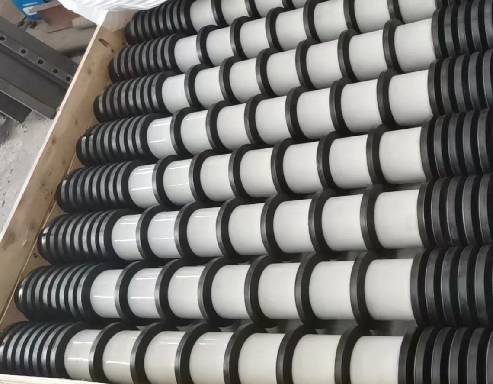 Afrikaans
Afrikaans  Albanian
Albanian  Amharic
Amharic  Arabic
Arabic  Armenian
Armenian  Azerbaijani
Azerbaijani  Basque
Basque  Belarusian
Belarusian  Bengali
Bengali  Bosnian
Bosnian  Bulgarian
Bulgarian  Catalan
Catalan  Cebuano
Cebuano  Corsican
Corsican  Croatian
Croatian  Czech
Czech  Danish
Danish  Dutch
Dutch  English
English  Esperanto
Esperanto  Estonian
Estonian  Finnish
Finnish  French
French  Frisian
Frisian  Galician
Galician  Georgian
Georgian  German
German  Greek
Greek  Gujarati
Gujarati  Haitian Creole
Haitian Creole  hausa
hausa  hawaiian
hawaiian  Hebrew
Hebrew  Hindi
Hindi  Miao
Miao  Hungarian
Hungarian  Icelandic
Icelandic  igbo
igbo  Indonesian
Indonesian  irish
irish  Italian
Italian  Japanese
Japanese  Javanese
Javanese  Kannada
Kannada  kazakh
kazakh  Khmer
Khmer  Rwandese
Rwandese  Korean
Korean  Kurdish
Kurdish  Kyrgyz
Kyrgyz  Lao
Lao  Latin
Latin  Latvian
Latvian  Lithuanian
Lithuanian  Luxembourgish
Luxembourgish  Macedonian
Macedonian  Malgashi
Malgashi  Malay
Malay  Malayalam
Malayalam  Maltese
Maltese  Maori
Maori  Marathi
Marathi  Mongolian
Mongolian  Myanmar
Myanmar  Nepali
Nepali  Norwegian
Norwegian  Norwegian
Norwegian  Occitan
Occitan  Pashto
Pashto  Persian
Persian  Polish
Polish  Portuguese
Portuguese  Punjabi
Punjabi  Romanian
Romanian  Russian
Russian  Samoan
Samoan  Scottish Gaelic
Scottish Gaelic  Serbian
Serbian  Sesotho
Sesotho  Shona
Shona  Sindhi
Sindhi  Sinhala
Sinhala  Slovak
Slovak  Slovenian
Slovenian  Somali
Somali  Spanish
Spanish  Sundanese
Sundanese  Swahili
Swahili  Swedish
Swedish  Tagalog
Tagalog  Tajik
Tajik  Tamil
Tamil  Tatar
Tatar  Telugu
Telugu  Thai
Thai  Turkish
Turkish  Turkmen
Turkmen  Ukrainian
Ukrainian  Urdu
Urdu  Uighur
Uighur  Uzbek
Uzbek  Vietnamese
Vietnamese  Welsh
Welsh  Bantu
Bantu  Yiddish
Yiddish  Yoruba
Yoruba  Zulu
Zulu belt conveyor idlers
Understanding Belt Conveyor Idlers A Key Component in Material Handling
Belt conveyor idlers play a crucial role in the efficiency and functionality of material handling systems across various industries. These components are essential for supporting the conveyor belt, ensuring smooth operation, and reducing wear and tear on the entire system.
Understanding Belt Conveyor Idlers A Key Component in Material Handling
There are several types of idlers, each designed for specific applications. The most common types include troughing idlers, flat idlers, and return idlers. Troughing idlers, for instance, are used to create a trough shape in the belt, allowing for the efficient transportation of bulk materials. Flat idlers, on the other hand, are used where the belt is not carrying bulk materials, providing a flat surface for the belt to glide over. Return idlers are located on the return leg of the conveyor, supporting the belt as it returns to the loading area.
belt conveyor idlers

The selection of idlers greatly impacts the longevity and efficiency of the conveyor system. High-quality idlers can reduce maintenance costs and increase the lifespan of both the conveyor and its components. Additionally, advancements in technology have led to the development of idlers that are more resistant to wear, corrosion, and environmental factors, further enhancing their performance.
Regular maintenance and inspection of idlers are vital to ensuring that they operate efficiently. Issues such as misalignment, wear, and damage can lead to increased downtime and operational costs. Therefore, implementing a routine maintenance schedule is essential for identifying potential problems before they escalate.
In conclusion, belt conveyor idlers are integral to the smooth and efficient operation of conveyor systems. Their design and maintenance are crucial for optimizing performance, reducing energy consumption, and maximizing the lifespan of the entire material handling system. As industries continue to evolve, the importance of selecting the right idler configuration and materials will only become more significant in achieving operational excellence.
-
Revolutionizing Conveyor Reliability with Advanced Rubber Lagging PulleysNewsJul.22,2025
-
Powering Precision and Durability with Expert Manufacturers of Conveyor ComponentsNewsJul.22,2025
-
Optimizing Conveyor Systems with Advanced Conveyor AccessoriesNewsJul.22,2025
-
Maximize Conveyor Efficiency with Quality Conveyor Idler PulleysNewsJul.22,2025
-
Future-Proof Your Conveyor System with High-Performance Polyurethane RollerNewsJul.22,2025
-
Driving Efficiency Forward with Quality Idlers and RollersNewsJul.22,2025





























